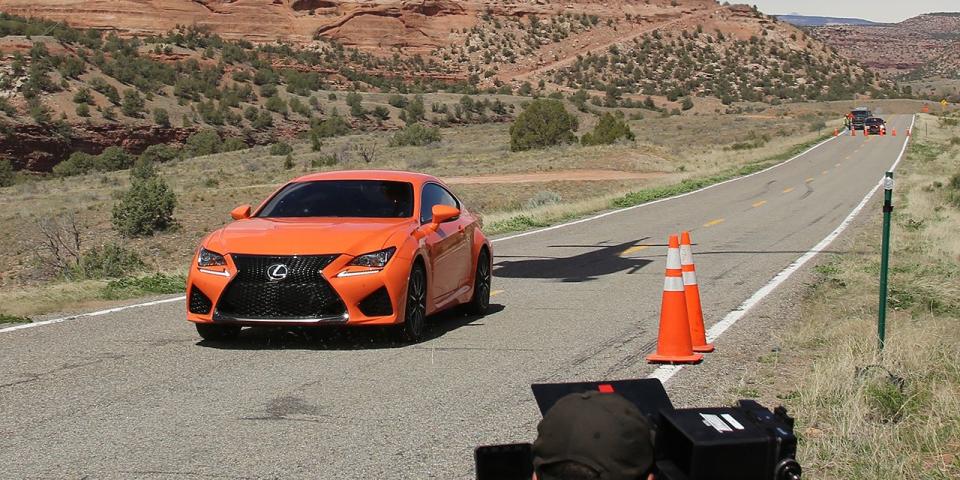In Colorado, a Big Budget and Crew Try to Make Top Gear, American-Style


From the August 2015 issue
Car television went plotz a few months ago with the sudden meltdown of Britain’s Top Gear. If only Jeremy Clarkson had first given a thought to old Woody Hayes or George S. Patton, two guys who accomplished a lot in life but are often remembered first (or second—certainly in the top five) for hitting an underling. You can scream and you can throw things, as Indiana’s Bobby Knight did, but as a leader in modern times, you can’t physically attack your people, a rule Knight helped affirm by getting himself fired for brutalizing kids. People got mad at the BBC for firing Clarkson; those people think life was better in the caves. As of this writing, rumors abound of Clarkson’s return on another show. In the meantime, TV land has grown a little dimmer for car folk. After its 2002 overhaul, Top Gear became the benchmark. It was lavishly conceived and cinematically filmed, ingraining so many memes into the car-video genre, from clouds scudding in fast motion to pounding choral music to the use of the pull-focus to liven up static shots. Everything else automotive on TV has mostly suffered in comparison, including its own American spinoff. Well, car TV’s big, bad T. rex may be down, slugged senseless and twitching, but there are still shows trying to match Top Gear’s standard but using very different funding methods. Recently, I took a ride to western Colorado to watch an episode being shot of a show with the amusing title of Shut Up and Drive.
Robert Dalrymple, the show’s co-creator and executive producer, is one of a legion of Hollywooders who make a quiet but often-lucrative living doing smaller stuff such as documentaries and reality shows on deep cable. He produced 39 episodes of the former Speed channel show called Test Drive, which had four-time SCCA Trans-Am champ Tommy Kendall as its host, and is now in the third season of Shut Up and Drive. That show runs on Fox Sports, which absorbed Speed in 2013. Shut Up’s premise is simple: Go to spectacular roads voted on by viewers online, hire the local cops to close a section, and pit the two hosts in a race against the clock in a car supplied by an automaker that pays the bills.

Shut Up is effectively an infomercial, but stands nonetheless as a decent 22 minutes of light entertainment. That’s because the budget is not small, nor is it misspent. There are 27 people on the shoot, a lengthy equipment list that includes a rented Eurocopter AStar helo carrying a remote-control Cineflex and Arri Alexa high-def camera system that costs about as much as a new Porsche 911 Turbo, and a remote setting in Mother Nature’s best rock garden that would stun if filmed on an iPhone. The venue was Highway 141, a spectacular snake that traces the Dolores River where it cuts a deep, meandering canyon through red Entrada sandstone in the western San Juan Mountains. Home base is the Gateway Canyons Resort & Spa, built by Discovery Channel founder John Hendricks about an hour south of Grand Junction as a car-nerd nirvana, where you can tee off with a race-spec stadium truck in the morning and finish in a rented Ford GT in the afternoon. All of this is fodder for the show.
The host is British racer Justin Bell, son of five-time Le Mans winner Derek Bell and the possessor of a tongue well trained by many car-video shoots. For this episode, he’s paired in a Lexus RC F with another racing scion, New Zealand rally and drift star Rhys Millen. Together, they sounded like announcers for the Commonwealth Games, and after stumbling on a take in which he prepares to do a “toin coss” to set the start order, Bell said the truest words never aired on American television: “If you say it with a British accent, nobody notices.” Bell and Millen then took turns in the bellowing RC F running a section that doesn’t seem very challenging until it’s done at triple digits, a rock wall flashing by on the left and a 500-foot cliff looming on the right, below which lie the carcasses of several cars operated by lesser (and presumably deceased) drivers. True, modern cars suck a lot of the drama out of speed; Dalrymple’s helicopter and many cameras work hard to put it back in through the flattening medium of television. They largely succeed.
The shoot carried on for three days through varying but always chilly weather. Dalrymple’s orchestration of his resources seemed cool and efficient, with little standing around, a schedule that stuck, and no slugging or “shouty bits,” as the Brits might say. Bell and Millen were buoyant and snarky, and the finished product is indeed Top Gear–like in appearance, even if it lacks the critical say-anything edginess that Clarkson and his cohorts enjoyed.
And therein lies the Catch-22 that prevents all our shows from being Top Gear, which had a 38-year head start on a public-service channel funded by British taxpayers. To look as good as Top Gear, you have to spend, which means you have to seek sponsors, which means you can’t make Top Gear, exactly. Not on an American channel, anyway. So, to everyone who complains that this or that show isn’t Top Gear, please just shut up and watch.
You Might Also Like

 Yahoo Autos
Yahoo Autos 